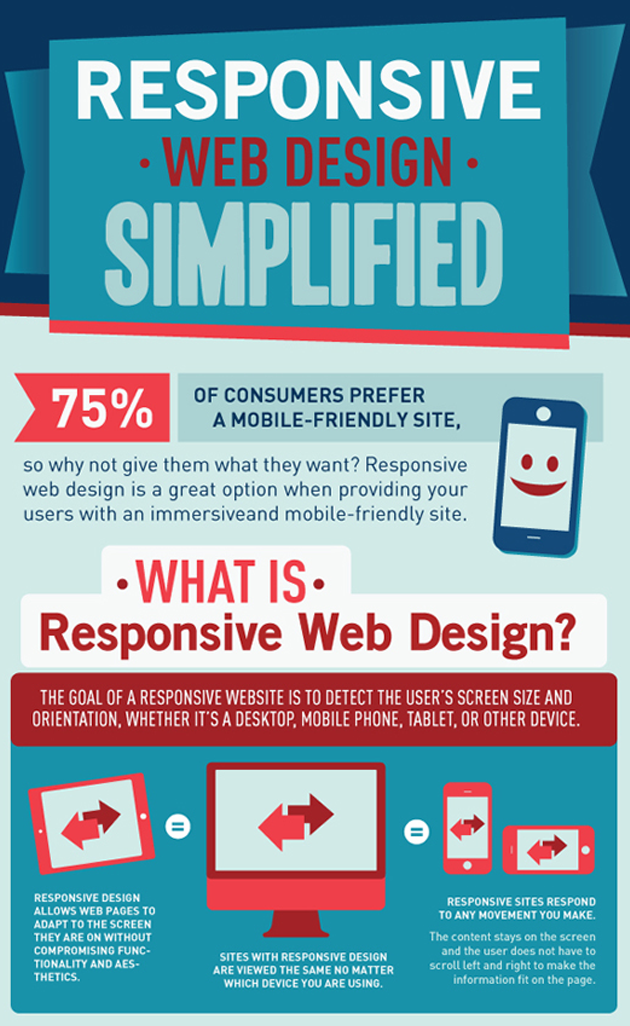The Evolution Of Website Design: From Past To Present
The Evolution Of Website Design: From Past To Present
Blog Article
Writer-Abel Dodson
In the past, internet sites were basic and focused on details. Navigation was direct, and style was for desktop computers. Currently, user experience is vital. Information overviews designs for very easy navigation. Responsive formats fit different tools. Today, dark setting lowers pressure, and minimalist food selections enhance navigation. Interactive attributes involve users, and strong visuals stick out. AI assimilation improves involvement. See just how style has actually developed to boost your online journey.
Early Days of Website Design
In the early days of website design, simpleness reigned supreme. Websites were fundamental, with minimal colors, typefaces, and layouts. The emphasis was on giving information instead of showy visuals. Customers accessed the web with sluggish dial-up links, so speed and capability were crucial.
Navigation menus were straightforward, commonly situated on top or side of the page. https://dallaszsmfz.bloggerbags.com/35044192/crafting-convincing-ad-text-for-your-pay-per-click-initiatives were designed for desktop computers, as mobile browsing wasn't yet prevalent. Content was king, and developers focused on very easy readability over complex design elements.
HTML was the primary coding language utilized, and developers needed to function within its restraints. Animations and interactive attributes were minimal contrasted to today's criteria. Web sites were static, with little dynamic web content or individualized user experiences.
Increase of User-Focused Layout
With the evolution of site style, a change in the direction of user-focused layout principles has actually become progressively famous. Today, producing internet sites that prioritize individual experience is important for involving visitors and achieving company goals. User-focused layout involves comprehending the demands, choices, and actions of your target market to tailor the web site's format, web content, and includes appropriately.
https://www.searchenginejournal.com/author/adriana-stein/ perform thorough research study, such as customer surveys and use testing, to collect insights and feedback directly from customers. This data-driven technique helps in developing intuitive navigating, clear calls-to-action, and visually attractive user interfaces that reverberate with site visitors. By placing the customer at the center of the layout procedure, sites can supply a more personalized and delightful experience.
Receptive layout has actually likewise become a key aspect of user-focused design, guaranteeing that web sites are optimized for numerous devices and screen dimensions. This versatility enhances availability and usability, accommodating the varied methods individuals connect with web sites today. In essence, the rise of user-focused layout indicates a shift towards producing digital experiences that prioritize the needs and expectations of the end customer.
Modern Trends in Website Design
Explore the current patterns shaping website design today. One popular trend is dark setting style, supplying a streamlined and modern look while reducing eye strain in low-light atmospheres. One more key pattern is minimalist navigation, streamlining food selections and boosting customer experience by concentrating on essential elements. Integrating micro-interactions, such as computer animated buttons or scrolling results, can produce a much more appealing and interactive web site. Receptive layout continues to be critical, making certain smooth customer experiences across numerous gadgets. Additionally, utilizing bold typography and asymmetrical layouts can include aesthetic interest and draw attention to specific content.
Integrating AI modern technology, like chatbots for consumer assistance or tailored suggestions, improves user involvement and simplifies procedures. Access has likewise become a considerable fad, with developers focusing on inclusive layout methods to accommodate diverse customer needs. Embracing sustainability by enhancing site efficiency for speed and efficiency is one more emerging fad in website design. Collaborating with user feedback and data analytics to iterate and boost style continually is crucial for staying appropriate in the ever-evolving electronic landscape. By embracing these modern-day trends, you can produce an aesthetically enticing, user-friendly website that resonates with your target market.
Conclusion
As you review the advancement of internet site design from the early days to currently, you can see exactly how user-focused layout has come to be the driving force behind contemporary patterns.
Accept https://what-is-the-definition-of96283.blog-ezine.com/29972664/fascinated-in-harnessing-the-potential-of-local-seo-discover-the-crucial-methods-that-every-local-business-owner-must-recognize-to-raise-their-on-the-internet-presence-and-draw-in-more-customers of adjustment and adaptation in website design, constantly keeping the individual experience at the forefront.
Remain existing with the current fads and innovations, and never quit evolving your strategy to develop aesthetically sensational and straightforward web sites.
mobile search engine optimization , adapt, and develop - the future of website design is in your hands.
